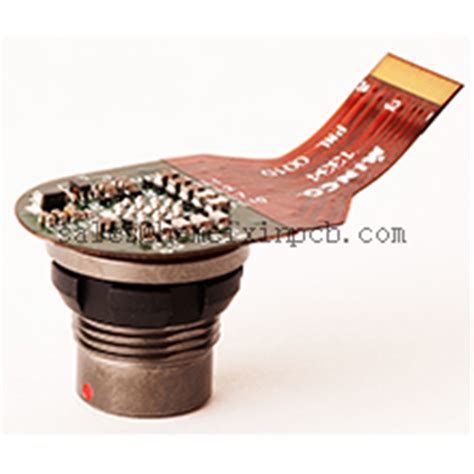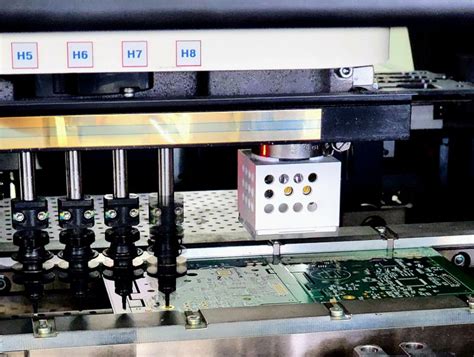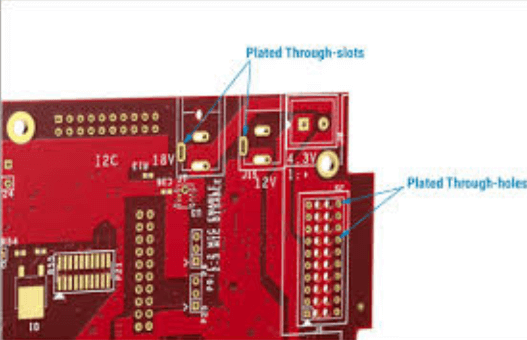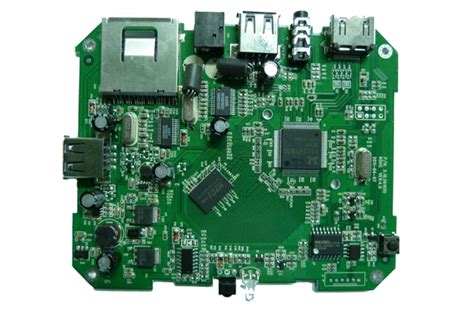Flex pcb led
Advantages Of Using Flex PCB In LED Applications
In the rapidly evolving world of electronics, the integration of flexible printed circuit boards (PCBs) in LED applications has emerged as a significant advancement, offering numerous advantages that enhance both functionality and design. As the demand for more versatile and efficient lighting solutions grows, the use of flex PCBs in LED technology has become increasingly prevalent, providing a range of benefits that traditional rigid PCBs cannot match.
One of the primary advantages of using flex PCBs in LED applications is their inherent flexibility, which allows for innovative design possibilities.
Unlike rigid PCBs, flexible circuits can be bent, folded, and twisted to fit into unconventional spaces and shapes. This adaptability is particularly beneficial in applications where space is limited or where the LED lighting needs to conform to a specific form factor, such as in automotive lighting, wearable technology, and architectural lighting designs. The ability to mold the circuit to fit the desired application not only enhances the aesthetic appeal but also improves the overall functionality of the LED system.
Moreover, flex PCBs contribute to a reduction in weight and size, which is crucial in applications where minimizing bulk is essential.
The lightweight nature of flexible circuits makes them ideal for use in portable and compact devices, where every gram counts. This reduction in weight does not come at the expense of durability; on the contrary, flex PCBs are known for their robustness and ability to withstand mechanical stress. This durability ensures that the LED systems remain reliable over time, even in environments subject to vibration or movement.
In addition to their physical advantages, flex PCBs offer significant electrical benefits.
They provide excellent electrical performance due to their ability to support high-density circuit designs. This capability is particularly important in LED applications, where efficient power distribution and signal integrity are critical. The use of flex PCBs can lead to improved thermal management, as they can be designed to dissipate heat more effectively than their rigid counterparts. This is a crucial factor in LED applications, where excessive heat can lead to reduced performance and lifespan of the LEDs.
Furthermore, the integration of flex PCBs in LED applications can lead to cost savings in both manufacturing and assembly.
The streamlined design process, which often involves fewer components and connections, reduces the complexity and time required for assembly. This simplification can result in lower production costs and faster time-to-market for new LED products. Additionally, the reliability and longevity of flex PCBs can lead to reduced maintenance costs over the lifespan of the LED system, providing further economic benefits.
In conclusion, the use of flexible printed circuit boards in LED applications offers a multitude of advantages that make them an attractive choice for modern lighting solutions. Their flexibility, lightweight nature, durability, and superior electrical performance provide significant benefits over traditional rigid PCBs. As technology continues to advance, the role of flex PCBs in LED applications is likely to expand, driving innovation and efficiency in the lighting industry. The combination of these factors underscores the importance of flex PCBs as a key component in the development of next-generation LED technologies.
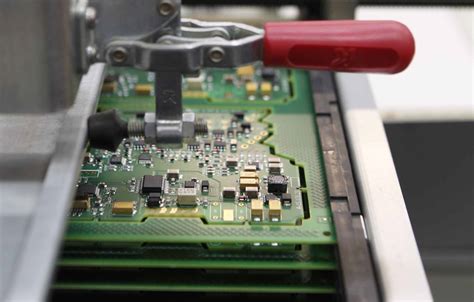
Design Considerations For Flex PCB LED Systems
When designing flex PCB LED systems, several critical considerations must be taken into account to ensure optimal performance and reliability. Flex PCBs, or flexible printed circuit boards, offer unique advantages in LED applications due to their ability to conform to various shapes and spaces, making them ideal for innovative lighting solutions. However, the design process requires careful attention to detail to fully leverage these benefits.
To begin with, material selection is paramount in the design of flex PCB LED systems.
The choice of substrate material affects the board’s flexibility, thermal management, and overall durability. Polyimide is a popular choice due to its excellent thermal stability and flexibility, which are crucial for maintaining performance in dynamic environments. Additionally, the copper layer thickness must be carefully selected to balance flexibility with the necessary current-carrying capacity for the LEDs.
Transitioning to the layout design, it is essential to consider the arrangement of the LED components on the flex PCB.
The layout should minimize the length of conductive traces to reduce resistance and potential voltage drops, which can affect LED brightness and efficiency. Moreover, the placement of LEDs should be optimized for uniform light distribution, taking into account the specific application and desired lighting effect. This often involves strategic spacing and orientation of the LEDs to achieve the best results.
Thermal management is another critical aspect of designing flex PCB LED systems.
LEDs generate heat during operation, and inadequate heat dissipation can lead to reduced lifespan and performance. Therefore, incorporating thermal vias, heat sinks, or thermal pads into the design can help manage heat effectively. Additionally, selecting materials with good thermal conductivity and designing the PCB with adequate ventilation can further enhance thermal performance.
Electrical considerations also play a significant role in the design process.
Ensuring proper power distribution across the flex PCB is vital to prevent overloading and potential damage to the LEDs. This involves calculating the total power requirements and designing the power traces to handle the expected current load. Furthermore, incorporating protective components such as fuses or current-limiting resistors can safeguard the system against electrical faults.
In addition to these technical considerations, manufacturability and cost-effectiveness are important factors in the design of flex PCB LED systems.
The complexity of the design should be balanced with the capabilities of the chosen manufacturing process to ensure that the final product can be produced efficiently and within budget. This may involve simplifying the design where possible or selecting manufacturing partners with expertise in flex PCB production.
Finally, testing and validation are crucial steps in the design process to ensure that the flex PCB LED system meets all performance and reliability requirements. This involves conducting thorough testing under various conditions to verify that the system operates as intended and can withstand the demands of its intended application. By addressing these design considerations comprehensively, designers can create flex PCB LED systems that are not only innovative and efficient but also reliable and durable, meeting the needs of a wide range of applications.
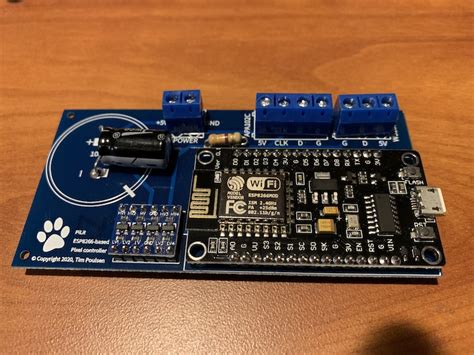
Innovations In Flex PCB LED Technology
The realm of flexible printed circuit boards (PCBs) has witnessed remarkable advancements, particularly in the integration of light-emitting diodes (LEDs). This innovation has opened new avenues for design and application, offering unprecedented flexibility and efficiency. Flex PCB LED technology is revolutionizing industries by providing solutions that are not only versatile but also highly efficient and adaptable to various environments.
To begin with, the fundamental advantage of flex PCB LED technology lies in its inherent flexibility.
Unlike traditional rigid PCBs, flexible PCBs can be bent, folded, and twisted without compromising their functionality. This characteristic makes them ideal for applications where space constraints and unconventional shapes are a concern. For instance, in the automotive industry, flex PCB LEDs are increasingly being used in lighting systems that require intricate designs and compact installations. The ability to conform to the contours of a vehicle’s interior or exterior allows for more creative and efficient lighting solutions.
Moreover, the integration of LEDs into flexible PCBs enhances the durability and longevity of lighting systems.
LEDs are known for their energy efficiency and long lifespan, and when combined with the robust nature of flexible PCBs, they create a lighting solution that is both sustainable and cost-effective. This combination is particularly beneficial in consumer electronics, where devices are expected to be lightweight, durable, and energy-efficient. Flexible PCB LEDs meet these demands by providing a reliable lighting source that can withstand the rigors of daily use.
In addition to their physical flexibility and durability, flex PCB LEDs offer significant advantages in terms of design and customization.
The manufacturing process allows for the creation of complex circuits on a single flexible substrate, enabling designers to incorporate multiple functionalities into a compact form factor. This capability is especially valuable in the development of wearable technology, where space is at a premium, and the need for lightweight, multifunctional components is paramount. Flex PCB LEDs can be seamlessly integrated into fabrics and other materials, paving the way for innovative applications in fashion, healthcare, and sports.
Furthermore, the advancements in flex PCB LED technology are driving improvements in energy efficiency and environmental sustainability.
LEDs are already known for their low power consumption, and when used in conjunction with flexible PCBs, they contribute to the development of eco-friendly products. This is particularly important in today’s world, where there is a growing emphasis on reducing carbon footprints and promoting sustainable practices. By utilizing flex PCB LEDs, manufacturers can create products that not only meet consumer demands for efficiency but also align with global sustainability goals.
As the technology continues to evolve, the potential applications for flex PCB LEDs are expanding.
From automotive and consumer electronics to healthcare and fashion, the versatility of this technology is being harnessed to create innovative solutions across various sectors. The ongoing research and development in this field promise even more exciting advancements, with the potential to further enhance the capabilities and applications of flex PCB LEDs.
In conclusion, the innovations in flex PCB LED technology are transforming industries by offering flexible, durable, and efficient lighting solutions. The ability to integrate LEDs into flexible PCBs is unlocking new possibilities for design and application, making it a pivotal development in the world of electronics. As this technology continues to advance, it is poised to play a crucial role in shaping the future of lighting and electronic design.

Cost-Effective Solutions With Flex PCB LED Integration
In the rapidly evolving landscape of electronics, the integration of flexible printed circuit boards (PCBs) with light-emitting diodes (LEDs) has emerged as a cost-effective solution for a variety of applications. This innovative combination not only enhances the functionality and versatility of electronic devices but also offers significant advantages in terms of design flexibility and cost efficiency. As industries continue to seek ways to optimize their products, the adoption of flex PCB LED technology is becoming increasingly prevalent.
To begin with, the inherent flexibility of flex PCBs allows for the creation of complex and compact designs that are not feasible with traditional rigid PCBs.
This adaptability is particularly beneficial in applications where space constraints are a critical consideration, such as in wearable technology, automotive lighting, and medical devices. By enabling the integration of LEDs into flexible substrates, manufacturers can develop products that conform to unique shapes and surfaces, thereby expanding the possibilities for innovative design.
Moreover, the use of flex PCBs in LED integration contributes to a reduction in overall production costs.
The streamlined manufacturing process associated with flex PCBs minimizes the need for additional components and connectors, which in turn reduces material costs and assembly time. Additionally, the lightweight nature of flex PCBs can lead to lower shipping costs and easier handling during the production process. These cost-saving benefits are particularly advantageous for industries that require large-scale production, as they can significantly impact the bottom line.
In addition to cost efficiency, the integration of LEDs with flex PCBs offers enhanced performance characteristics.
The close proximity of LEDs to the circuit board allows for improved thermal management, which is crucial for maintaining the longevity and reliability of LED components. Effective heat dissipation ensures that LEDs operate within optimal temperature ranges, thereby preventing premature failure and ensuring consistent performance over time. This is especially important in high-demand applications such as automotive and industrial lighting, where reliability is paramount.
Furthermore, the versatility of flex PCB LED technology extends to its environmental benefits.
The reduced material usage and energy-efficient nature of LEDs contribute to a lower environmental footprint compared to traditional lighting solutions. As sustainability becomes an increasingly important consideration for consumers and manufacturers alike, the adoption of eco-friendly technologies such as flex PCB LEDs aligns with the growing demand for environmentally responsible products.
As we look to the future, the potential applications for flex PCB LED integration continue to expand.
The rise of the Internet of Things (IoT) and smart devices presents new opportunities for incorporating flexible lighting solutions into everyday objects, enhancing both functionality and user experience. Additionally, advancements in materials and manufacturing techniques are likely to further drive down costs and improve the performance of flex PCB LED systems, making them an even more attractive option for a wide range of industries.
In conclusion, the integration of flex PCBs with LEDs represents a cost-effective and versatile solution that addresses the evolving needs of modern electronic applications. By offering design flexibility, cost savings, enhanced performance, and environmental benefits, this technology is poised to play a significant role in the future of electronics. As industries continue to innovate and adapt, the adoption of flex PCB LED solutions will undoubtedly contribute to the development of more efficient, reliable, and sustainable products.

